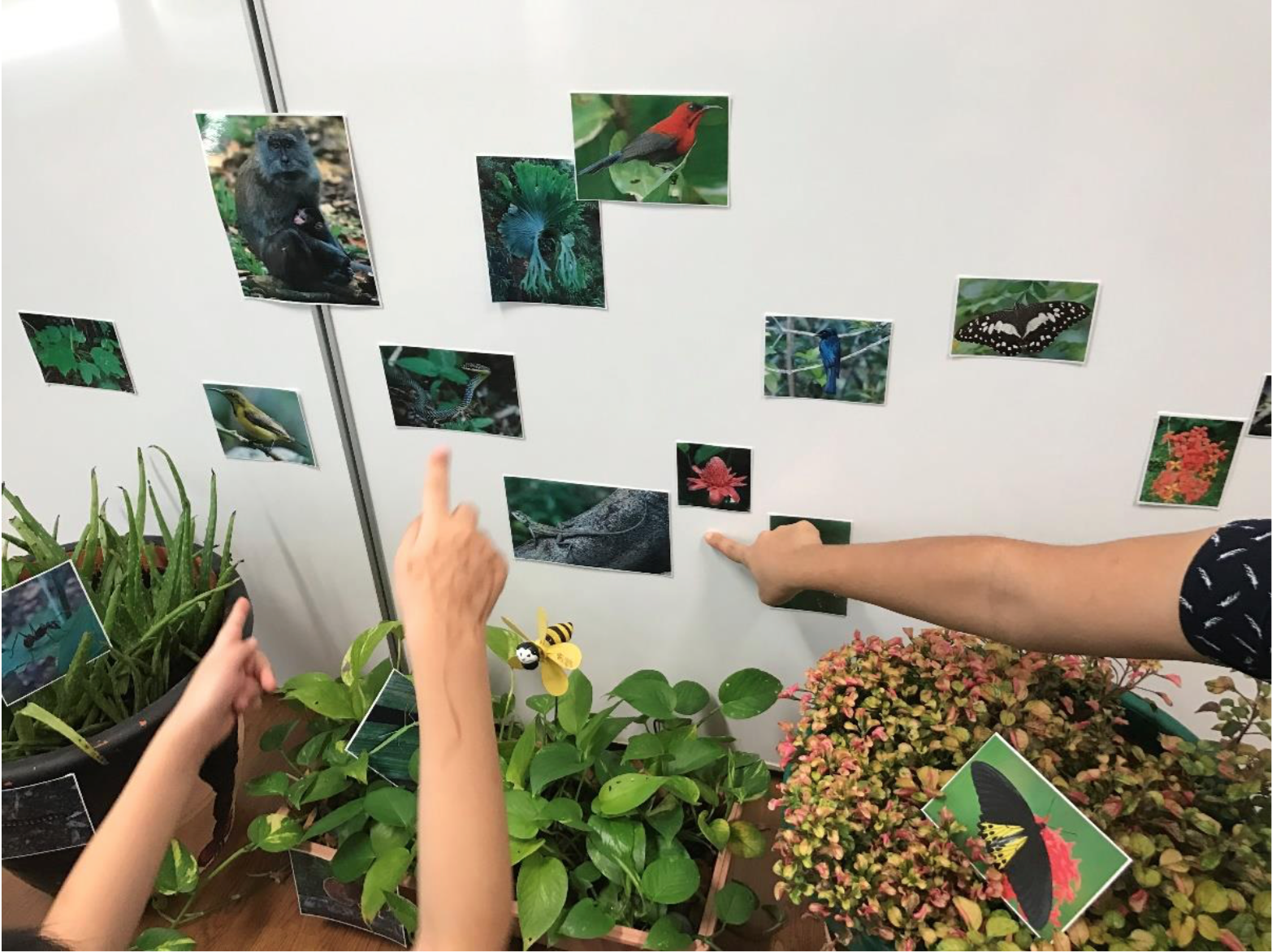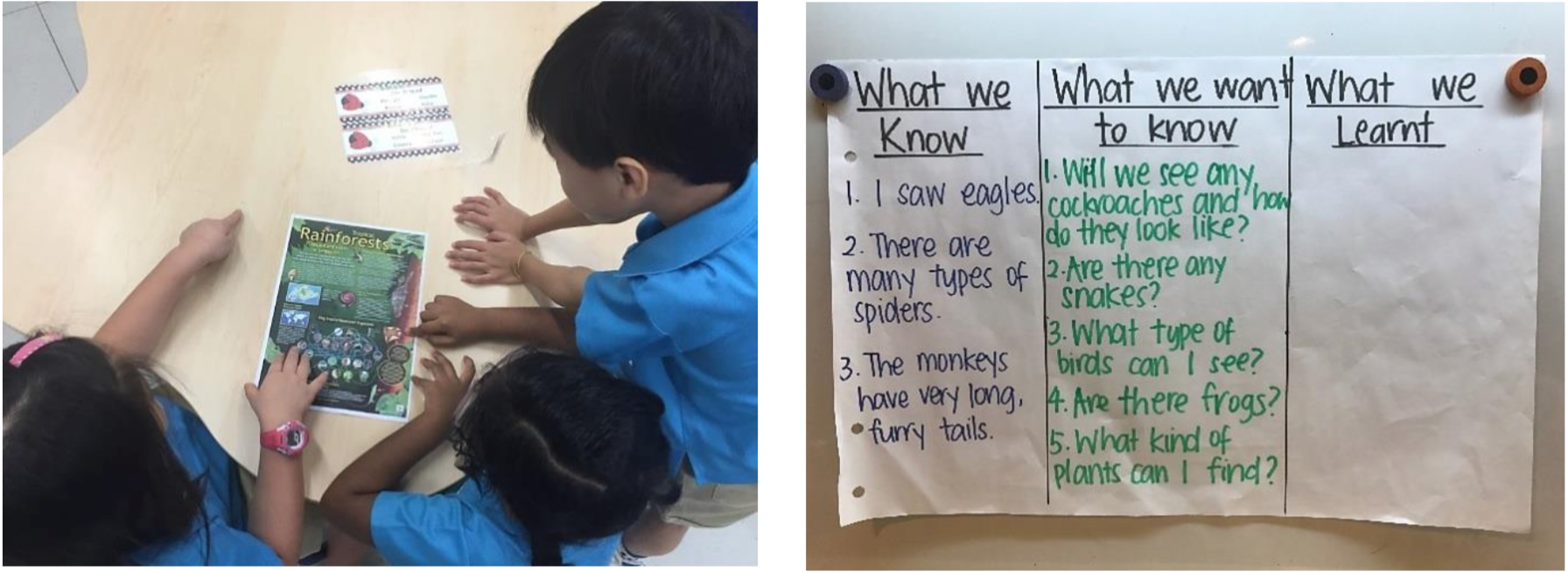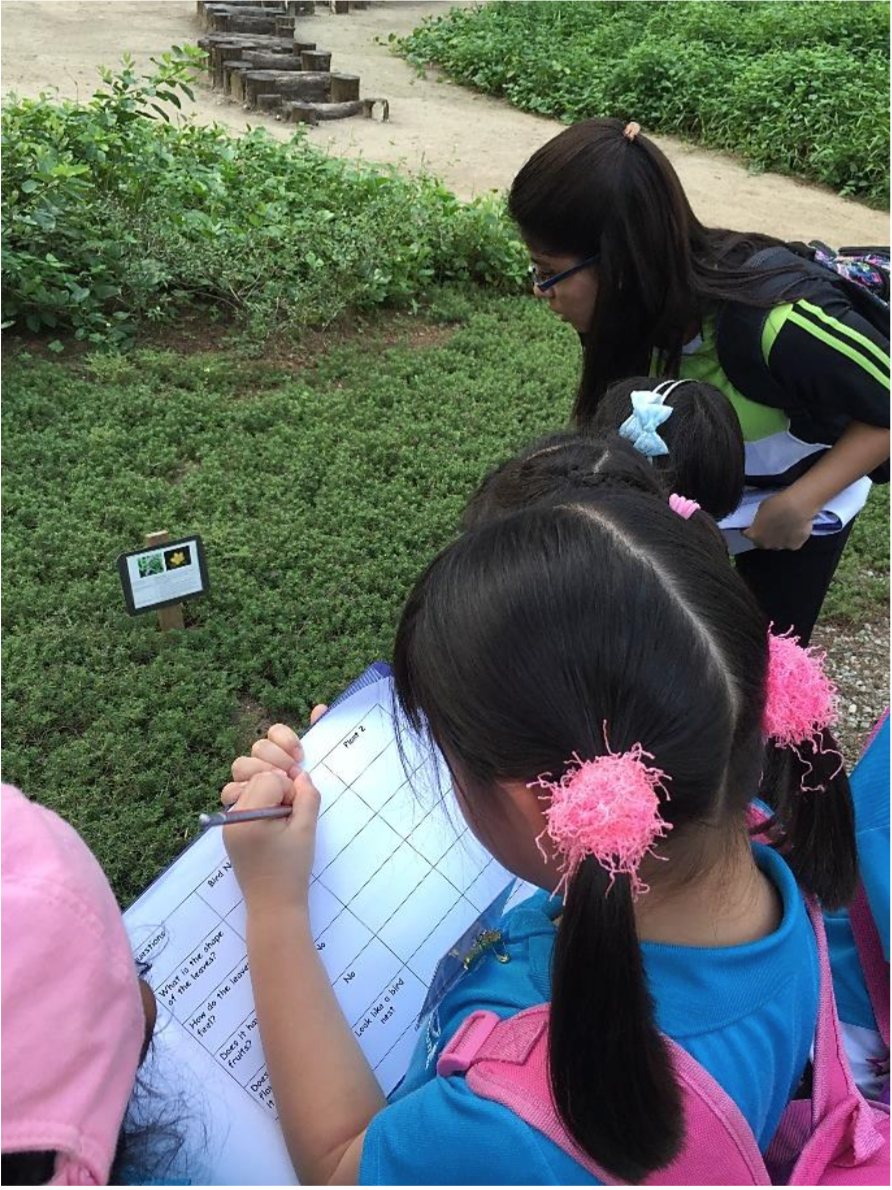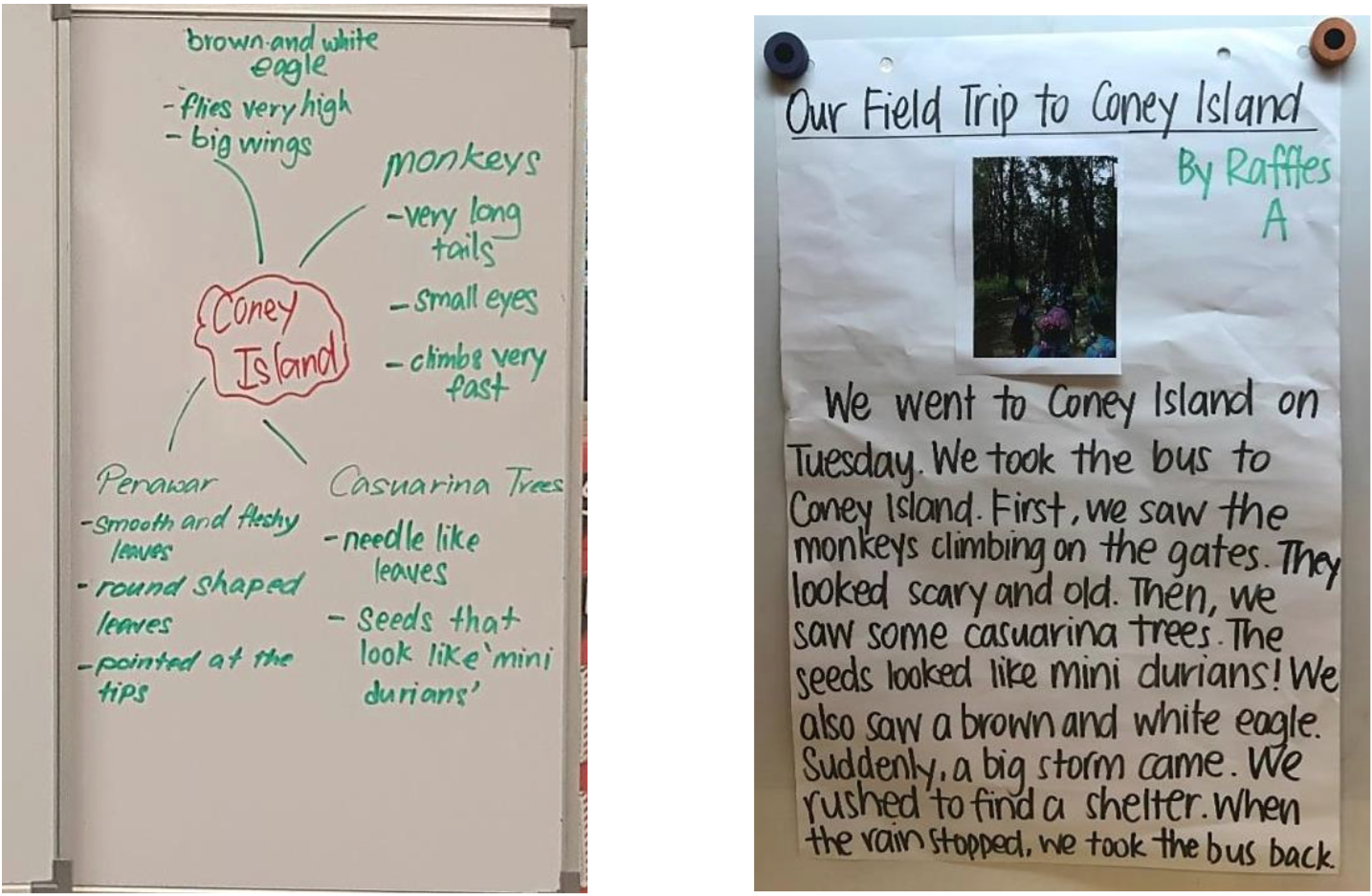Overview
Have you thought of bringing your children on a field trip to a nature reserve in Singapore? What kind of learning opportunities do the wide array of plants, animals and insects present to your children?
Here’s a lesson idea that allows children to record their observations as they explore the nature reserve, talk about their findings and explore TWO learning areas through an integrated approach.
Your children will find out more about the plants and animals in the nature reserve, and gain an interest in the world that they live in through this field trip!
|
Learning Areas |
Learning Goals |
|
Discovery of the World (DOW) |
LG 1: Show an interest in the world they live in LG 2: Find out why things happen and how things work through simple investigations |
|
Language and Literacy (L&L) |
LG 2: Speak to convey meaning and communicate with others |
| Refer to the Nurturing Early Learners (NEL) Framework, pp. 65 – 107, for more information on the learning areas and learning goals. |
|---|
Learning Objectives
Children will be given opportunities
to:
1. Make simple recordings of their observations during the field trip
2. Talk about animals and plants in the nature reserve based on their observations#1 Bring in the forest!
How?
- Bring local flora and fauna into your classroom and/or show pictures of plants, animals and insects that are commonly found in nature reserves.
- Generate discussion by getting children to talk about their observations of the local flora and fauna, and inviting them to share their experiences at a nature reserve, rainforest or park.

Generating discussion among the children based on the stimulus provided
Raise the children’s awareness by showing them satellite images of green spaces and photographs of nature reserves in Singapore. Help them understand that green spaces such as forests, nature reserves and parks, are important protected areas for plants and animals.
#2 Where are we going?
|
Unlike an excursion which is usually planned as a recreational activity, a field trip is planned with teaching and learning objectives in mind, and involves children’s active involvement and participation before, during and after the trip. Refer to NEL Educators’ Guide: Overview pp. 41 – 49 on planning for field trips. |
How?
- Provide children with pictures and/or brochures of the nature reserve that they will be visiting.
- Invite children to talk about the nature reserve based on their observations from pictures and/or brochures.
- Encourage them to ask questions about the plants and animals they may see there.
- Record and organise their questions using a graphic organiser such as a question wall or KWL chart[1].

#3 We're going on a Field Trip!
During the field trip, provide the children with opportunities to observe their surroundings and make simple recordings of their observations.
| Take plenty of photographs during the field trip! Use them to help children recall what they have seen and done as well as to stimulate discussion during subsequent learning activities. |
|---|
![]()

How can children record their observations?
- Take photographs of the plants and animals in the nature reserve
- Make simple recordings of their observations by drawing and writing
- Record the sounds made by the animals
#4 Sharing our observations
Help your children to consolidate what they have learnt from the field trip.
How?
- Refer to the children’s questions on the question wall/KWL chart and record what they have learnt on the question wall/KWL chart.
- Write a class story about the field trip. Invite the children to contribute the title and sentences for the class story.
Suggested
prompts:
- Where did we go? What did we do there?
- What did you see/smell/hear?
- How did you feel?
|
The Language Experience Approach (LEA) is an example of shared writing where children use their own words to compose stories stimulated by a shared experience, for example, going on a field trip to a nature reserve. Refer to the NEL Educators’ Guide: Language and Literacy pp. 43 – 46 for more information on shared writing. |

Writing a class story about the field trip to help children consolidate their learning